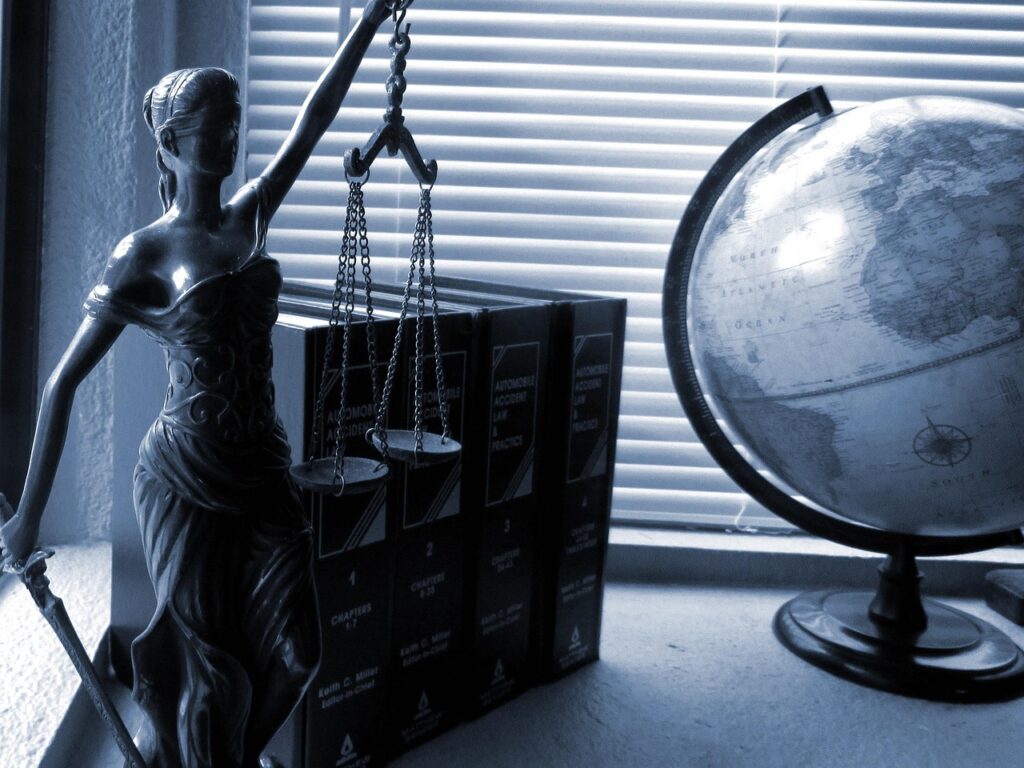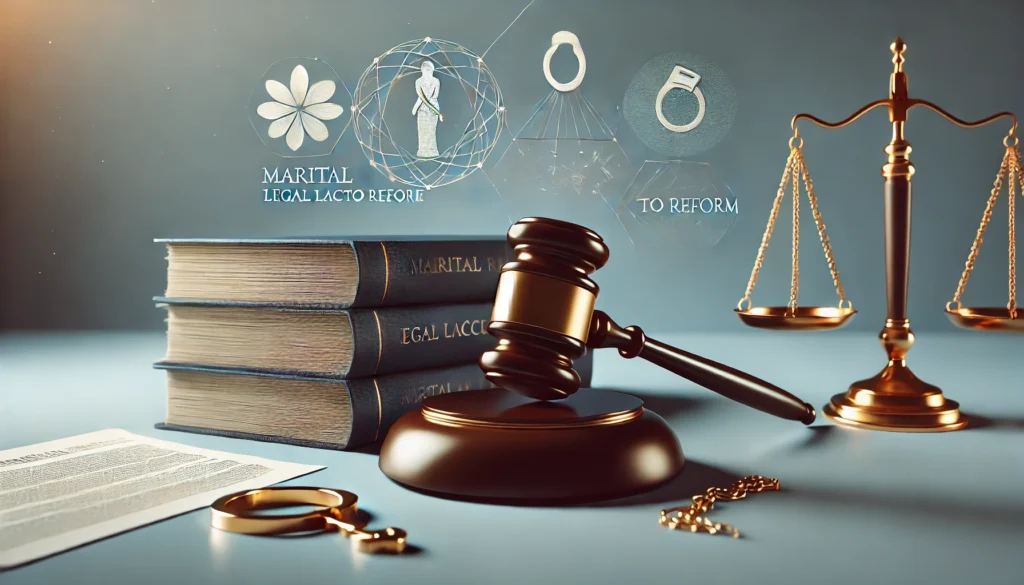Published On: 16th August 2025
Authored By: Ayushi Yadav
Shri Ramswaroop Memorial University
Abstract
This article examines how the Indian Constitution reconciles the principles of equality and social justice through the system of reservation. It explains why reservation is essential for historically disadvantaged communities such as the Scheduled Castes (SCs), Scheduled Tribes (STs), and Other Backward Classes (OBCs), while also considering the introduction of reservations for the Economically Weaker Sections (EWS). The discussion highlights constitutional provisions like Articles 15(4), 15(5), 16(4), and key judicial pronouncements, including Indra Sawhney v. Union of India, M. Nagaraj v. Union of India, and Janhit Abhiyan v. Union of India. The article argues that reservation does not undermine equality; instead, it is a mechanism to achieve substantive equality by uplifting those historically marginalized. It concludes by suggesting reforms to make the system more equitable and effective.
Introduction
India is a nation of immense diversity, encompassing varied religions, castes, languages, and cultures. Alongside this diversity, however, lies persistent inequality. For centuries, marginalized communities—particularly the SCs, STs, and OBCs—were subjected to systemic discrimination, exclusion from education, and denial of dignified employment. To remedy these injustices, the framers of the Constitution introduced reservation as a tool for achieving social justice.
Yet, reservations have always sparked debate. Critics argue that they conflict with the constitutional principle of equality, while supporters maintain that they ensure genuine equality by addressing historical disadvantages. This tension raises the fundamental question: How can the Constitution balance the ideals of equality with the pursuit of social justice?
What is Reservation
Reservation refers to a policy under which certain opportunities in education, public employment, and political representation are set aside for specific groups that have historically faced discrimination or remain underrepresented. In India, reservation is primarily aimed at ensuring equal access and social justice.
The reservation system applies to:
-
Education (universities and institutions)
-
Government jobs
-
Politics (Parliament and State Legislatures)
The categories that benefit include:
-
Scheduled Castes (SCs)
-
Scheduled Tribes (STs)
-
Other Backward Classes (OBCs)
-
Economically Weaker Sections (EWS)
The objectives of reservation are threefold:
-
To promote social equality,
-
To address historical injustices, and
-
To facilitate economic and educational empowerment.
By ensuring representation and opportunities, reservation functions as an instrument for bridging inequalities and fostering inclusivity.
Why is Reservation Needed?
-
Historical Discrimination: For centuries, Dalits and tribal communities were denied basic rights such as temple entry, access to education, and dignified employment. They were labeled as “untouchables” and excluded from mainstream society.
-
Unequal Opportunities: Even today, many children from these communities lack access to proper schooling and resources due to poverty, discrimination, or social barriers.
-
Representation in Power: Reservation ensures that marginalized groups have a voice in governance, education, and employment, thereby promoting inclusive decision-making.
-
Level Playing Field: Reservation is not a privilege but a corrective measure to place historically disadvantaged groups on an equal footing. It ensures that those pushed back for centuries can finally compete on fair terms.
Constitutional Provisions for Reservation
Recognizing the deep-rooted inequities in Indian society, the framers of the Constitution incorporated provisions to advance social justice. Key provisions include:
-
Article 15(4) and 15(5): Empower the State to make special provisions for the advancement of SCs, STs, and socially and educationally backward classes, particularly in education.
-
Article 16(4): Allows reservation in public employment for backward classes inadequately represented in government services.
-
Articles 330 and 332: Provide reservation of seats in Parliament and State Legislative Assemblies for SCs and STs.
-
Article 335: Directs that the claims of SCs and STs must be considered in matters of employment, while maintaining administrative efficiency.
-
Article 46: A Directive Principle requiring the State to promote educational and economic interests of SCs, STs, and other weaker sections.
These provisions collectively reflect the constitutional commitment to social justice and equitable representation.
Who Gets Reservation?
The Indian reservation system extends benefits to four broad categories:
-
Scheduled Castes (SCs): Historically treated as “untouchables,” SCs faced extreme social exclusion and deprivation. Reservation ensures their access to education, employment, and political participation, correcting centuries of injustice.
-
Scheduled Tribes (STs): Indigenous communities, often geographically isolated and deprived of resources, face educational and economic backwardness. Reservations safeguard their cultural identity while ensuring inclusion.
-
Other Backward Classes (OBCs): Identified by the Mandal Commission (1980) as socially and educationally disadvantaged, OBCs benefit from reservations in education and employment to promote upward mobility.
-
Economically Weaker Sections (EWS): The 103rd Constitutional Amendment (2019) introduced a 10% quota for economically disadvantaged individuals from non-SC/ST/OBC categories, marking a shift towards economic criteria in affirmative action.
Together, these provisions aim to create a more inclusive society by addressing both caste-based and economic disadvantages.
Major Court Decisions on Reservation
Judicial interpretation has significantly shaped the reservation framework:
-
Indra Sawhney v. Union of India (1992): Known as the Mandal Commission case, the Supreme Court upheld 27% reservation for OBCs but capped total reservations at 50%. The Court initially barred reservations in promotions, though subsequent rulings modified this stance.
-
M. Nagaraj v. Union of India (2006) 8 SCC 212: The Court allowed reservation in promotions but required the State to demonstrate backwardness, inadequate representation, and administrative efficiency.
-
Janhit Abhiyan v. Union of India (2023) 1 SCC 1: The Supreme Court upheld the 103rd Constitutional Amendment, validating the 10% quota for EWS, and confirmed that economic criteria can also justify reservation.
-
State of Kerala v. N.M. Thomas (1976) 2 SCC 310: The Court recognized that equality under Article 14 allows for differential treatment of unequals to achieve substantive justice.
Balancing Equality and Social Justice
The primary challenge lies in reconciling equality with social justice.
-
Equality (Article 14): Guarantees equality before law and equal protection of laws. However, the Constitution allows reasonable classification to address social realities.
-
Social Justice: Seeks to remove inequalities and ensure fair opportunities for all, particularly the disadvantaged.
Thus, treating everyone identically does not necessarily constitute fairness. Justice often requires treating unequals differently to achieve real equality.
Example: If two children start a race from unequal positions, treating them “equally” without correcting their starting points is inherently unfair. True equality demands leveling the field first.
Arguments in Favor of Reservation
-
Correcting Historical Injustice: Provides redress for centuries of exclusion and denial of rights.
-
Enhancing Diversity: Encourages representation of diverse communities in education, governance, and employment.
-
Reducing Poverty and Discrimination: Empowers marginalized groups by granting access to education and jobs.
-
Promoting Social Harmony: Inclusive policies reduce alienation and foster unity in a diverse society.
Arguments Against Reservation
-
Merit vs. Reservation: Critics argue that it may undermine quality by prioritizing caste over merit.
-
Creamy Layer Issue: Wealthier OBC families benefit disproportionately, leaving behind the truly needy.
-
Prolonged Policy: Originally intended as a temporary measure, reservations have continued indefinitely, raising concerns of dependency.
-
Deepening Social Divide: Sometimes reinforces caste identities and fosters resentment among excluded groups.
Can We Reform the System?
Reforms can ensure that reservations remain effective and equitable:
-
Periodic Review with Data: Use empirical data to identify beneficiaries and eliminate misuse.
-
Strengthening Education: Improve foundational education to reduce long-term dependence on reservation.
-
Support for All Poor: Extend targeted assistance to economically disadvantaged groups without diluting caste-based protections.
-
Restricting the Creamy Layer: Ensure benefits reach the genuinely disadvantaged within backward classes.
Reservation in the Private Sector
The demand to extend reservations to the private sector has gained momentum as private enterprises generate most employment opportunities. Proponents argue that private entities also benefit from public resources and should contribute to social justice by ensuring representation of marginalized groups.
Opponents, however, caution that compulsory quotas may affect efficiency and competitiveness. They advocate voluntary initiatives, such as diversity programs and skill development, instead of mandatory quotas.
Currently, reservation is not legally mandated in private employment, though it applies to private educational institutions under Article 15(5). The issue remains politically sensitive and requires a balanced approach that combines inclusion with economic pragmatism.
International Perspective on Affirmative Action
Globally, affirmative action policies are employed to counter historical discrimination:
-
United States: Race-based preferences in education and employment, though recent rulings have limited their scope.
-
South Africa: Black Economic Empowerment (BEE) policies to address the legacy of apartheid.
-
Malaysia: The New Economic Policy (NEP) provides preferential treatment for ethnic Malays (Bumiputeras) in education, business, and employment.
These examples highlight that affirmative action is a widely used mechanism to promote equality and social justice.
Conclusion
Reservation remains a vital instrument of social justice in India. Its purpose is not to divide but to heal society by empowering historically marginalized groups. It seeks not to deprive others of their rights but to extend equal opportunities to those who were denied them for generations.
At the same time, India must safeguard equality and prevent misuse of the system. The path forward lies in achieving balance—upholding social justice while building an inclusive society where individuals ultimately thrive on merit and equal access.
The Constitution, with its deep commitment to equality and justice, provides the foundation for this balance. Its principles, if applied with fairness and integrity, can ensure both equality and empowerment in modern India.




